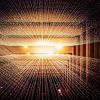Strategic advice to leverage new technologies
Technology is at the heart of nearly every enterprise, enabling new business models and strategies, and serving as the catalyst to industry convergence. Leveraging the right technology can improve business outcomes, providing intelligence and insights that help you make more informed and accurate decisions. From finding patterns in data through data science, to curating relevant insights with data analytics, to the predictive abilities and innumerable applications of AI, to solving challenging business problems with ML, NLP, and knowledge graphs, technology has brought decision-making to a more intelligent level. Keep pace with the technology trends, opportunities, applications, and real-world use cases that will move your organization closer to its transformation and business goals.
Insight
The Journey to Solution Focus
One of the most exciting ideas percolating through the Agile community is “solutions-focused” thinking, advancing through micro changes. In the next piece, Géry Derbier and Soledad Pinter tell stories of using solutions-focused thinking over several years, in the large — across an organization — and in the small — at the single-person and single-team level.
Rebooting Agile
Andy Hunt and Alistair Cockburn were part of the group that wrote the Agile Manifesto, and Joshua Kerievsky was practicing Industrial XP at the time. We, as foundational members of the Agile movement, are among those who feel that Agile has become overly complicated over the years, and we are now working to simplify things; to make sure the core ideas work in all fields, not just software. As we describe in the first article of the issue, it is time to reboot Agile.
Can AI Improve Agile Team Performance?
This Executive Update asks whether teams can use AI to increase the performance of Agile teams. Data collection, analysis, prediction, and reporting tend to make up a large proportion of the AI capabilities used in the project and portfolio management disciplines. Most tools are not uniquely oriented toward Agile delivery; this Update will concentrate on the Agile dimension. (Not a client? For a limited time, you can download a complimentary copy of this article here.)
Design thinking provides a structured approach to uncover the human factors in smart automation. It is also important to understand the design considerations involved. We explore those as well as the systems/technology and business processes involved in this Advisor.
3 Benefits of the Hybrid Cloud
Many organizations are now focusing on a hybrid cloud strategy: moving part of their IT capabilities to the cloud, while maintaining core elements in-house, hosted on-premises. The hybrid model is becoming immensely customary among organizations, as it enables them to optimally allocate their resources while keeping their current IT infrastructure operating at low risk. A hybrid cloud strategy not only prepares an organization for the future but also protects its investment today. In this Advisor, we explore the benefits of a hybrid cloud strategy.
The growth of automated and cognitive systems drives the need for more expressive and adaptive forms of metadata to enable and underpin such AI, which, in turn, raises questions about the traditional role of such metadata components as the data catalog, the business vocabulary, and the data model. This Advisor explores the data warehouse’s evolving role in digital business.
In this on-demand webinar with Cutter Consortium Senior Consultant Dr. Patrick Haibach, you’ll find out how RPA is augmenting the workforce in a variety of companies. You’ll learn the ways organizations are using the bot-technology. And you’ll discover what the next era of automation will look like.
One important indicator of just how far along in the adoption cycle a new technology (or practice) is depends on whether organizations have developed detailed plans or roadmaps for its adoption and dissemination across the organization. In this Advisor, we share some preliminary results from our ongoing customer experience (CX) management survey that offer some insight into current and future trends pertaining to the establishment of enterprise CX strategy plans.



















